Welcome to u.osu.edu. This is your first post. Edit or delete it, then start blogging!
Author: Steven Nagel
Scavenger Hunt: Plant Family
Solanum lycopersicum
Tomato
This is a tomato plant from my garden. Its in the Solanaceae family because it has a superior ovary and the fruit consists of two carpels. If you look closely you can see someone in the background.
Solidago canadensis
Canada Goldenrod
I found this Canada Goldenrod on the Alum Creek Trail. I knew it was in the Asteraceae family because of the complex compound flowers, their daisy like appearance also helps. Inside the flower head are a lot of tiny achene fruits which are also typical of Asteraceae.
Scavenger Hunt: Sight ID
Lonicera sp.
Honeysuckle found in the alley by my apartment.
The opposite leaves with paired red fruit made me think it was Honeysuckle. upon further inspection I saw that the pith inside the stems was hollow which is common to honeysuckles.
Vitis Sp.
This is Wilde grape vine that I found along the Scioto Trail at Scioto Audubon Metro Park. I noticed that it was wild grape vine because of the leaf shape and it was a large vine the was growing everywhere. there were also a few purple fruits still present on the plant which confirmed that this was Wild Grape Vine.
Scavenger Hunt: Special Characters
Perennial Pea
Lathyrus latifolius
I found this perennial pea in the alley outside of my apartment. These produce a dry legume fruit which is a single carpel that encloses several seeds. in my photos the legumes have already split open and dropped their seeds. You can see they split into two and then curled.
White Sweet Clover
Melilotus albus
I found this plant in a field at Scioto Audubon Metro Park. It produces a raceme inflorescent. Raceme inflorescence have many flowers being produced on the same stalk.
Brittney’s Scavenger Hunt
Rosa sp.
This plant was found during the field trip to the Chadwick Arboretum and learning garden. It was cultivated along the roadside of Lane Ave.
(ignore that it is in blue font and underline, I do not know how that got that way nor do I know how to change it)
This plant was found in the courtyard of Jennings Hall.
This is a member of the Poaceae family, also commonly known as the grass family. A conserved characteristic that helped identify this plant to family is the fact that it is a grass because of its hollow round open leaf sheath. Other conserved characteristics include tiny wind pollinated flowers, parallel venation, and they are monocot.
It is possibly a shrub of the Rosaceae family. Aronia berry
Aronia sp.
This plant was found outside of Jennings Hall.
This is a plant with berries. It was keyed as a berry because I squished the berry like structure and it was fleshy both inside and outside. It contains a black berry, with alternate, serrate leaves.
Through Newcomb’s it was not keyed correctly, however it may have been closely related to the Swamp Fly Honeysuckle
Lonicera oblongifolia
Similarities of the two are that the leaves are oblong, the berries are red and the leaves are entire and opposite, however the Swamp Fly Honeysuckle blooms in late spring. It is now fall as this picture is being taken.
This plant was found along the roadside of Henderson Rd.
This plant has opposite, simple, entire leaves. It was keyed because the leaf arrangement are next to each other along the stem, on the opposite sides of the stem, they contain one leaf per petiole, meaning they are simple, and the margins of the leaf are smooth, meaning entire.
Taraxacum officinale
Known as a Common Dandelion
This plant was also found during the field trip to Chadwick Arboretum and learning garden.
It was keyed to species because growing up, we all know what a dandelion is. However, it is commonly known to know an all yellow head.
Andropogon gerardii
Big Blue Stem
This picture was taken in the middle of the driveway to the parking lot at Cedar Bog.
This plant is one of the three main prairie grasses. It was keyed to Big Blue Stem because it was spoken about during the field trip to Cedar Bog. It’s characteristics include its tall height, it’s coloring of being reddish purple bronze, and it’s flowering part looking similar to that of a turkey’s foot.
Solanaceae family: Green peppers (Capsicum annuum)
Cyperaceae family:Yellow nutsedge (Cyperus esculentus)
Culver’s root (Veronicastrum virginicum)
Dandelion (Taraxacum officinale)
Sycamore (Platanus occidentalis)
![IMG_0045[1]](https://u.osu.edu/dassler.1/files/2014/10/IMG_00451-1zch584-300x224.jpg)
Here is a sycamore tree (Platanus occidentalis) found growing by Chadwick learning gardens. The sycamore has a distinct bark color with smooth white bark high on the tree with flaky brown bark at the base. The leaf arrangement is alternate making it a dead give away that the tree is in fact a Sycamore.
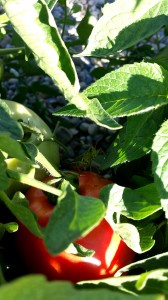










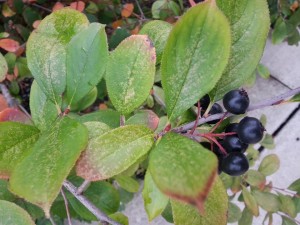
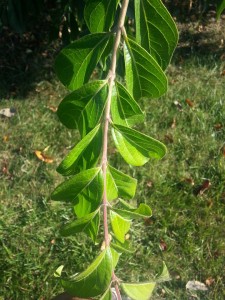

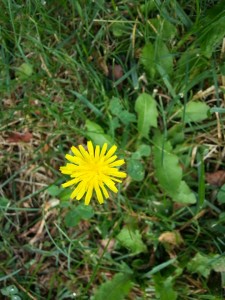

![IMG_0063[1]](https://u.osu.edu/dassler.1/files/2014/10/IMG_00631-16cb467-300x224.jpg)
![IMG_0026[1]](https://u.osu.edu/dassler.1/files/2014/10/IMG_00261-19xpg06-300x224.jpg)
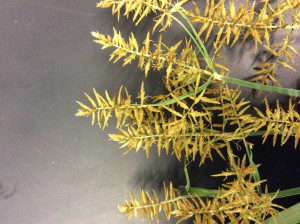


![IMG_0058[1]](https://u.osu.edu/dassler.1/files/2014/10/IMG_00581-wdx3r1-300x224.jpg)